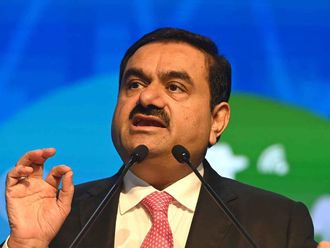No one would argue that the mobile technology has been transforming things around us. Initially invented to make calls on the go and send messages, mobile phones, and subsequent mobile devices, have evolved to assume a far more influential role in the life of individuals and businesses.
Today, we are talking about mobile wallets, mobile money transfer, mobile payments, etc., heralding an M-era that will potentially substitute the E-era.
Mobile commerce (m-commerce) is another platform that is thriving on such technology, and promises to be a game changer. Simply put, m-commerce means the use of wireless internet-enabled devices such as mobiles and tablets to make transactions. This new commerce platform is picking up so quickly that retailers can’t afford to just ignore it.
The rapid growth of retail mobile commerce has been facilitated by several factors. One of these is the high smartphone penetration, which has led to the emergence of the digital consumer. Another factor is the advancement in security technology which has reassured consumers and retailers alike and boosted trust in m-commerce.
Worldwide retail mobile commerce sales (excluding travel, and digital goods such as music and apps) are predicted to represent 27 per cent of e-commerce sales in 2014, and to continue growing to reach 43.8 per cent in 2017, by which date mobile payments are expected to transfer nearly $1 trillion.
In the US alone, estimates show that retail m-commerce sales are expected to reach $56.72 billion, which would amount to 19 per cent of the total retail e-commerce sales.
The same trend is expected in the UK as well, where sales via mobile devices currently account for a third of UK e-retail sales. Surveys have found that 11 per cent of UK retailers expect more than half of their web sales in 2014 will occur on smartphones and tablets. Coping with the trend, three quarters of multi-channel retailers now have a mobile-optimised website.
In our region, retail mobile commerce hasn’t yet gained similar traction despite the fact that the Gulf registers one of the world’s highest smartphone penetration rates. One reason could be that retailers themselves are late in embracing m-commerce.
Another has to do with consumers and retailers’ suspicion of the security and safety of m-commerce transactions. We expect, however, that the region will adopt m-commerce at a fast pace.
Already, the value of m-commerce in the Middle East is expected to reach almost $5 billion by 2015 out of an expected online e-commerce market of $15 billion.
What this implies for retailers in the region is that they can no longer choose to ignore mobile when they develop their marketing and sales strategy. With the plethora of mobile apps and the ability to shop on the go, consumers will continue to rely more and more on their smartphones and appreciate the convenience that they bring in.
Retailers have to understand that in the M-era consumers are connected around the clock, just a click away from browsing stores all over the world and it takes them only a few clicks to make purchases. They need to adapt to the evolving requirements of consumers if they are keen to seize the huge opportunity provided by m-commerce and sustain the business in the future.
Also, they need to think about the fastest ways to deliver the purchased goods to mobile buyers. Amazon is already testing its drone delivery system.
— The writer is the CEO of Emax Electronics.



_resources1_16a4a1613d8_small.jpg)






